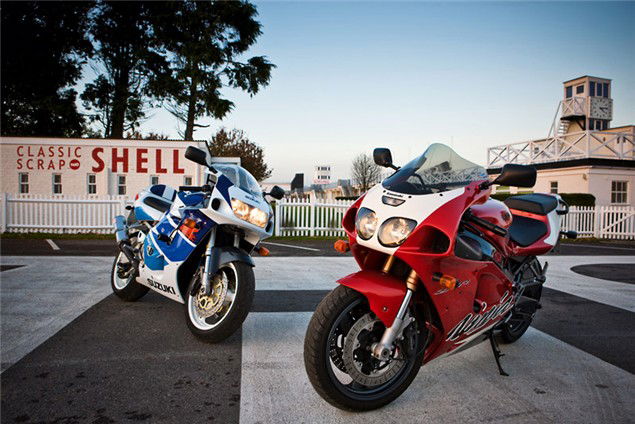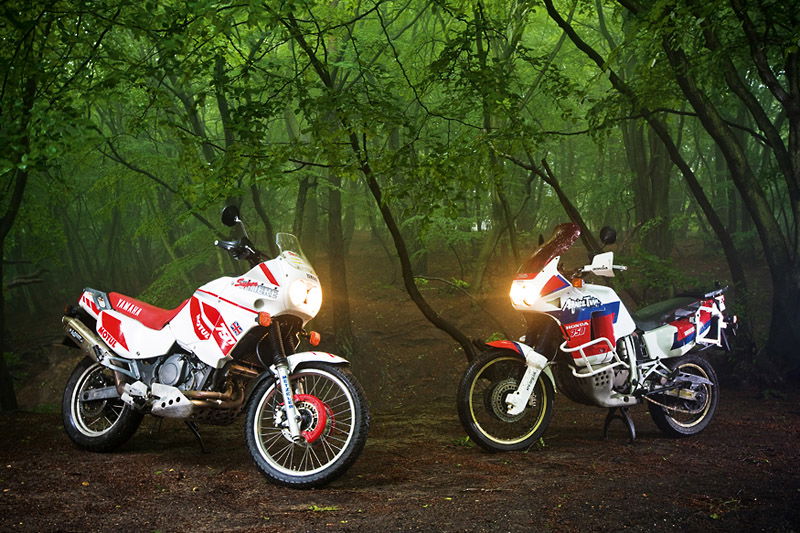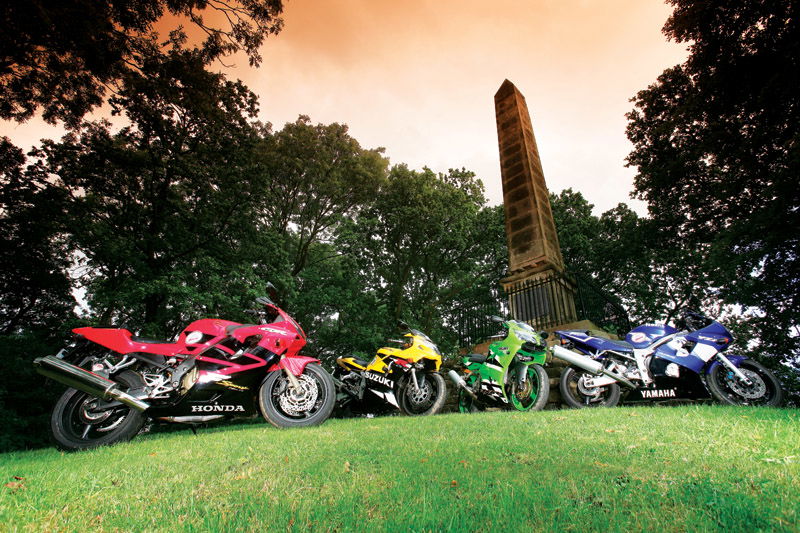Used test: Kawasaki ZX-7R vs Suzuki GSX-R750 SRAD
Suzuki's GSX-R brand represented the ultimate race replica for the people. Can Kawasaki's masterpiece take it on?


In pubs and over-crowded car parks across the country, these two protagonists were the talking point of the year. The 750cc market was still huge and it hadn’t had a shake-up for some time, so having two come along at once sent press and punters alike into a genuine frenzy. Despite endless technological updates, Suzuki had lost their way with the last of the Slingshots and had suffered as a result, with a lack of silverware on the track and a slightly dented reputation on the street. Known affectionately as ‘The Plank’, the ZXR750 was tired and ready for immediate replacement.
The incredible effort that Suzuki put into the development of the 750WT blew our minds then and is still evident today. The entire machine was scrutinised meticulously from the engine internals to the electrics to ensure that every weight saving improvement that could be made, was. Even the rolling chassis and its diminutive dimensions were based on the RGV500 GP bike to give the 750 the base line with which the engineers could create a track inspired winner. Suzuki’s intentions were clear. Take the Superbike class to a level so high that the competition wouldn’t stand a chance, just as they had done back in 1985 with the ‘Slab Side’ 750F. History tells us that they achieved precisely this, but in doing so left the door wide open for Kawasaki to barge in with their lime green bruiser.
So utterly focused were Suzuki on producing a razor-sharp, one-dimensional racer that they unwittingly intimidated the poor folk who wanted a proper sports bike, or something that looked the real deal, but would be a road-focused pussycat to ride - hence the huge success of the ZX-7R
The great leap forward for Suzuki is so evident in its styling. Whilst retaining the overall aggressive identity of the GSX-R family, the WT looked much sleeker, more business-like and genuinely very horny indeed. The fairing was now smaller with covered headlights but with enough screen for the rider to crouch behind, and created from the side profile what looked like the perfect aerodynamic flow with the air leaving the rider’s back and continuing on and past the bulging rear seat hump that caused a stir. A dozen years on and it still looks fast sitting still.
Kawasaki had created more of a handsome brute than a lithe beauty and the fascination with tiny and light had clearly not been a priority at development meetings in the leisure products department. In many ways the key to the respective looks and behaviour of these two is kilos. Suzuki had busted a gut to reduce their waistline while Kawasaki seemingly made no such attempt and proceeded to try to disguise it with a new set of clothes. It didn’t really work. The ZX-7R looks low and wide from every angle and indeed much more portly (and modern) than the outgoing ZXR750, even if it hadn’t actually gained any weight. It’s easy to sit here and poke the Kwak in the tummy and giggle behind its back but the fact is it looks bloody sensational. I know plenty of people who opted for it over the Suzuki purely on looks, and have met a few who have owned both. I always preferred the more aggressive looks of the 7R over the dinky WT in race trim, and it remains one of my favourite looking SBK racers of all time. Kawasaki also declined to develop the 7R over time, allowing it to sell well on its reputation until 2003, while Suzuki tinkered and fettled, introducing fuel injection a year later and enjoyed great success until its replacement in 2000.
The fact is that this category is a numbers obsessed game and Suzuki came up with the right numbers for a sensational power-to-weight ratio. The generous use of magnesium helped shave 9kg from the motor alone, 20kg off of the outgoing models weight and stood on the scales at over 25kg lighter than the 7R. If you combine 10% less weight and 10% more power, which the Suzuki did make at the wheel, then the significance of these numbers suddenly hits home, and you can bet that the riding experience is going to be on a very different level. What Suzuki had created was in fact so extreme that it instantly became the genuine and only rival for the already legendary 900cc Honda FireBlade which had dulled slightly since its inception.

